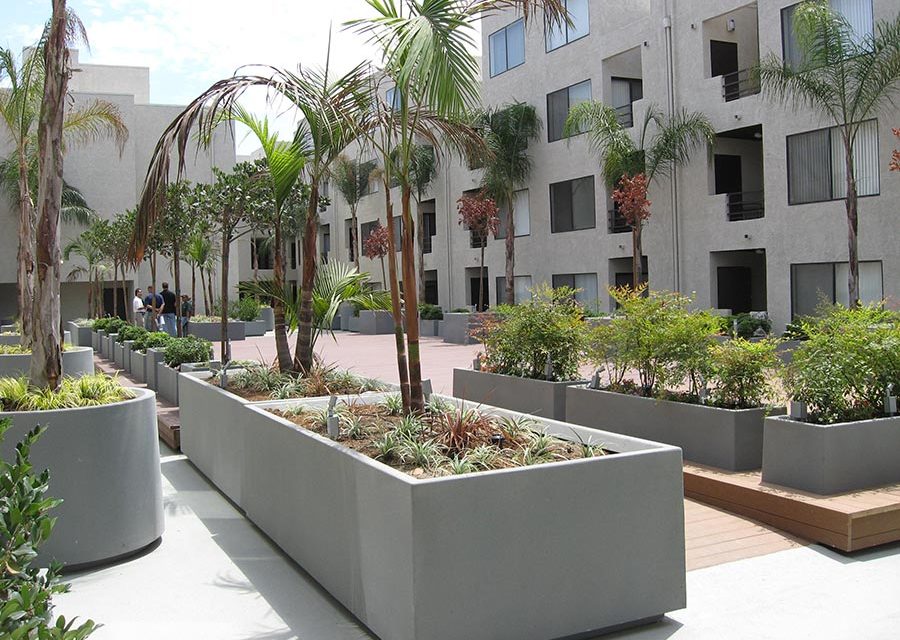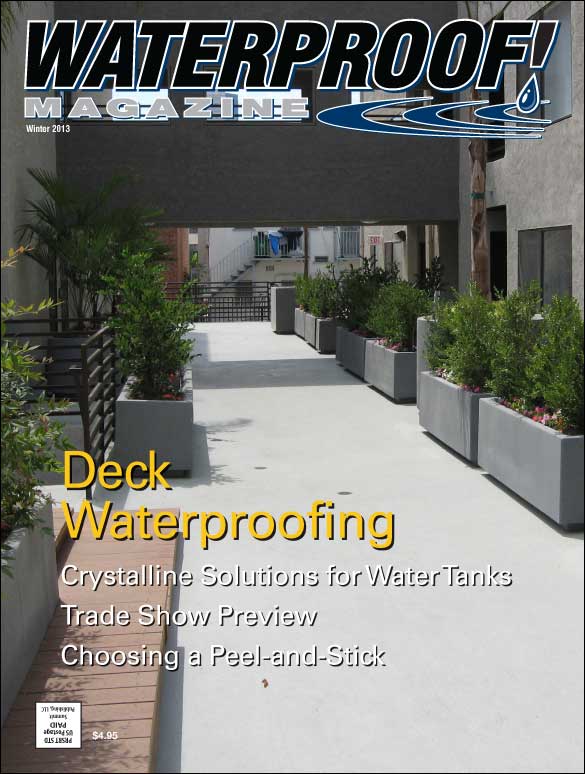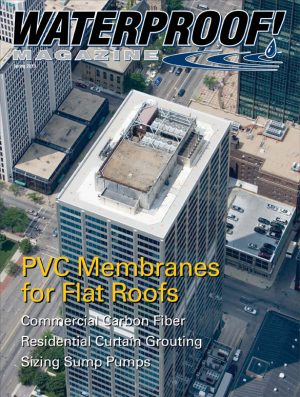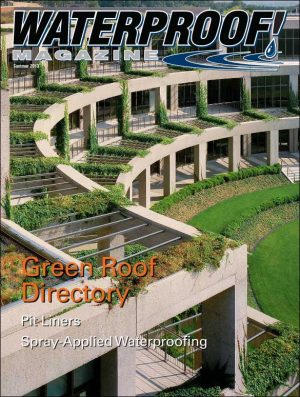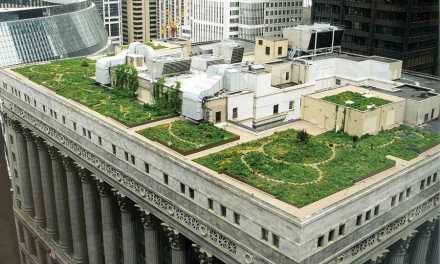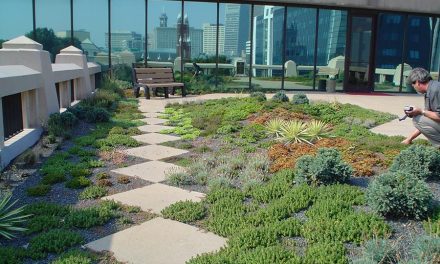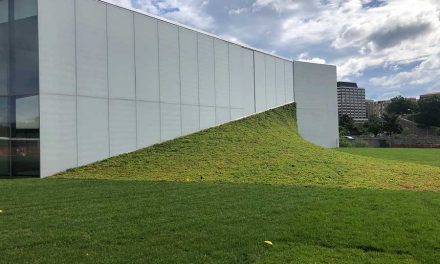Whether it’s a pool deck, high-rise balcony, small private patio or a sprawling rooftop deck, the demand for reliable waterproofing products and skilled installation contractors has never been higher.
Horizontal surfaces exposed to the weather can be difficult to waterproof. Inadequate slope can create areas of standing water. In colder climates, freeze/thaw cycles impose additional challenges. Frequently, the coating also has to stand up to foot traffic as well.
Fortunately, products are available that seal everything from pool decks to high-rise balconies. Whether the project is a small private patio or a sprawling rooftop gathering place, the goal is the same: Directing the water off the deck while keeping the substrate dry.
The need for reliable waterproofing products and skilled installation contractors has never been higher. The past decade has seen a sharp upswing in demand for rooftop decks.
Jennifer Ogilvie-Brackett, marketing manager at Duradek Ltd. explains, “Outdoor living space is a cherished commodity. There is no question that it adds value to the property. This is particularly true of rooftop decks which are fast becoming a major value-added feature in urban developments. Urbanites that have a desire for outdoor living space can develop their own little oasis of pleasure by converting flat roofs into roof top decks that require very little maintenance.
Bill Leys, owner of Central Coast Waterproofing, has done many such installations. He also maintains www.deckexpert.com, an online resource for deck waterproofers. He says the right waterproofing system for any given job depends on the substrate, condition, slope, and the amount of traffic expected.
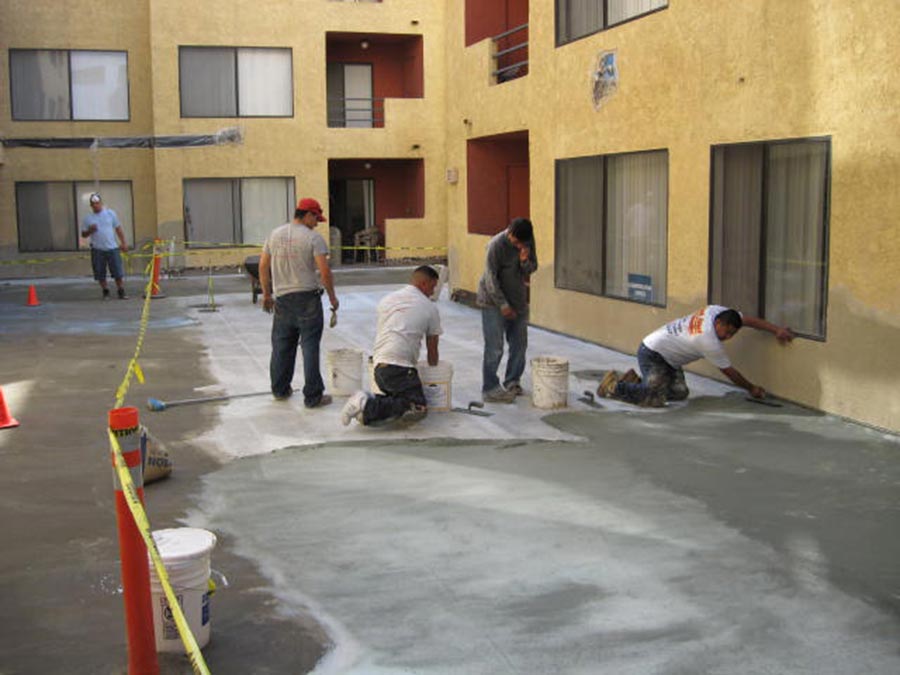
“I specialize in waterproofing residential decks with a plywood substrate,” he says, “and I prefer to use a cementitious system from Desert Crete made by Hill Brothers Chemical Co. But I have quite a bit of experience with concrete roof decks, pool decks and other horizontal surfaces that need treatment. For those surfaces, I use Desert Flex, a polymeric system utilizing chopped mat fiberglass and resins.”
Leys says nearly all deck waterproofing systems fall into five basic categories. Polymer-enhanced cements, and vinyl sheets are most often used in residential applications and are the focus of this article. Urethanes (including polyureas), fiberglass, and composite systems based around self-adhered “peel-and-stick” membranes are popular on large, commercial projects.
Epoxies, which are popular for indoor floor coatings, are not UV resistant, and make a poor choice for outdoor waterproofing applications.
Duradek has specialized in waterproofing and beautifying roof top decks since 1974. Their Ultra PVC Membrane is designed specifically for waterproofing decks over living space. It’s a 60-mil sheet vinyl available in a variety of finishes and colors, including some that imitate tile.
This product was recently used on a townhome development in Logan, Utah, which features rooftop entertainment space. David Rupp, the property developer admits, “We were hesitant to put decks over living space, with the cold winter climate, but Duradek has been an excellent fit.”
Advantages of vinyl include speed of application (it can be walked on as soon as it is laid), guaranteed millage, very little maintenance, and warranties up to 10 years. Disadvantages include the need to protect it from cuts and hot coals, and the fact that longevity depends on how well the seams were welded. Ogilvie-Brackett says Duradek averages 15 to 20 years.
Leys’ preferred coating, Desert Crete, relies on metal lath to prevent cracks. After the lath is concealed in a layer of polymer-modified cement, the deck gets another reinforcing layer of fiberglass mesh impregnated in a waterproofing compound. After the waterproofing dries, a second layer of the cement product is troweled over the bonded fiberglass, encasing it. A variety of different textures and pigments can then be applied in the finish coat.
Leys points out that this creates a roof-rated deck that has a Class A fire rating, and can stand up to chairs, tables, and planter pots being pulled across the surface. There are no offensive vapors like urethane coatings sometimes create. Desert Crete also has the ability to breath vapor up and out through the coating, which could originate from showers, faulty stucco, flashing or windows.
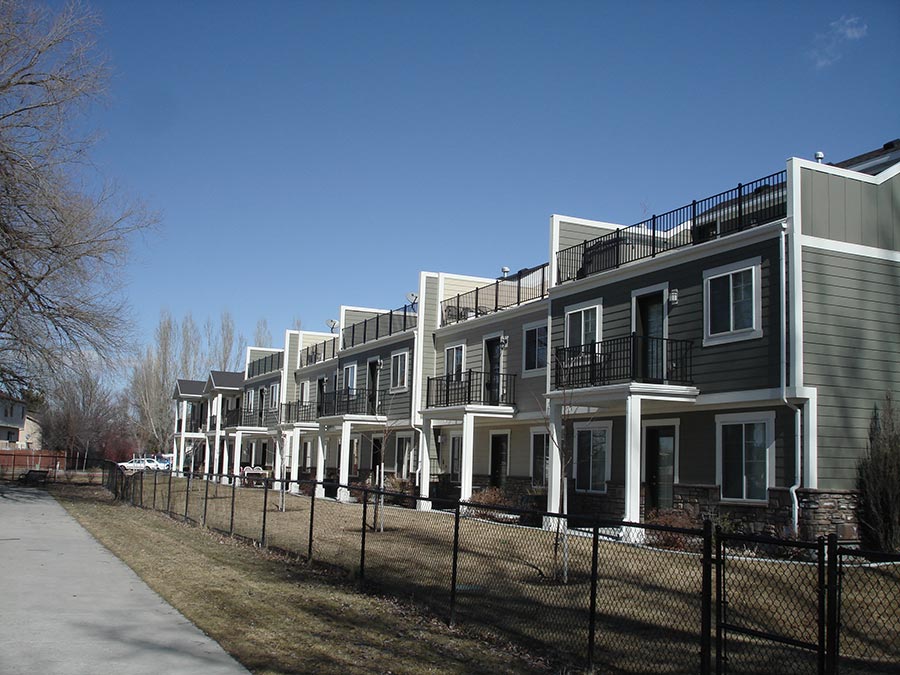
On the downside, like all coatings, cementitious coatings need to be resealed periodically—Leys recommends every three to five years to maintain the aesthetic appearance—so the maintenance requirements are higher than vinyl. (Note that every coating has inspection and maintenance requirements that must be met in order for the manufacturer’s warranty to remain enforceable. Leys says, “I’ve seen cases where required maintenance wasn’t done, and when problems arose, the manufacturer wasn’t bound under the terms of the warranty to perform.”)
A few cementitious coatings are suitable for commercial applications. A few years ago, Central Coast Waterproofing sealed a 14,000 sq. ft. concrete roof deck on an apartment building in Long Beach, Calif. “They had an old failing urethane coating on the deck,” says Leys, “and the biggest challenge was removal of the coating.” In the end, a modified forklift with a scraper was used. In some places the coating measured nearly three inches thick. Once the urethane was gone, the entire surface was shotblasted, and the crew could begin to address the inadequate slope, building up some areas and installing additional drains in others.
Because the substrate was concrete, metal lath was unnecessary. It was simply a matter of laying down the primer, and fiberglass, and then rolling the resin through it. After that was set, they encapsulated it in a thin layer of cement, and added the final texture/finish coat.
Now residents enjoy a durable, long-lasting, low-maintenance deck that offers robust protection from water ingress. They join a growing number who have discovered that roof top decks are an easy place to get away to, a diversion from the hustle and bustle of the city in the daytime, and a spectacular escape after dark when the skyline lights up.
Developers are discovering that retail value of rooftop decks more than offsets the cost of the initial installation. Waterproofers who are seeking to diversify may find additional profits by offering deck waterproofing services to take advantage of this trend.
Winter 2013 Back Issue
$4.95
Choosing a Peel-and-Stick
New Options for Waterproofing Decks
Keeping Water Tanks Watertight
AVAILABLE AS DIGITAL DOWNLOAD ONLY
Description
Description
Choosing a Peel-and-Stick
Self-adhered membranes are widely available, and have a long history of being used on below-grade vertical surfaces. At least a dozen brands are available, each with distinct advantages.
New Options for Waterproofing Decks
Horizontal surfaces exposed to the weather can be difficult to waterproof due to foot traffic and inadequate slope. However, products are available that seal everything from pool decks to high-rise balconies.
Keeping Water Tanks Watertight
Aging infrastructure and security mandates have created a growing niche market for concrete potable water tanks. Crystalline waterproofing is frequently specified, as it will not affect the quality of the drinking water.
Additional Info
Additional information
| Magazine Format | Digital Download Magazine, Print Mailed Magazine |
|---|

